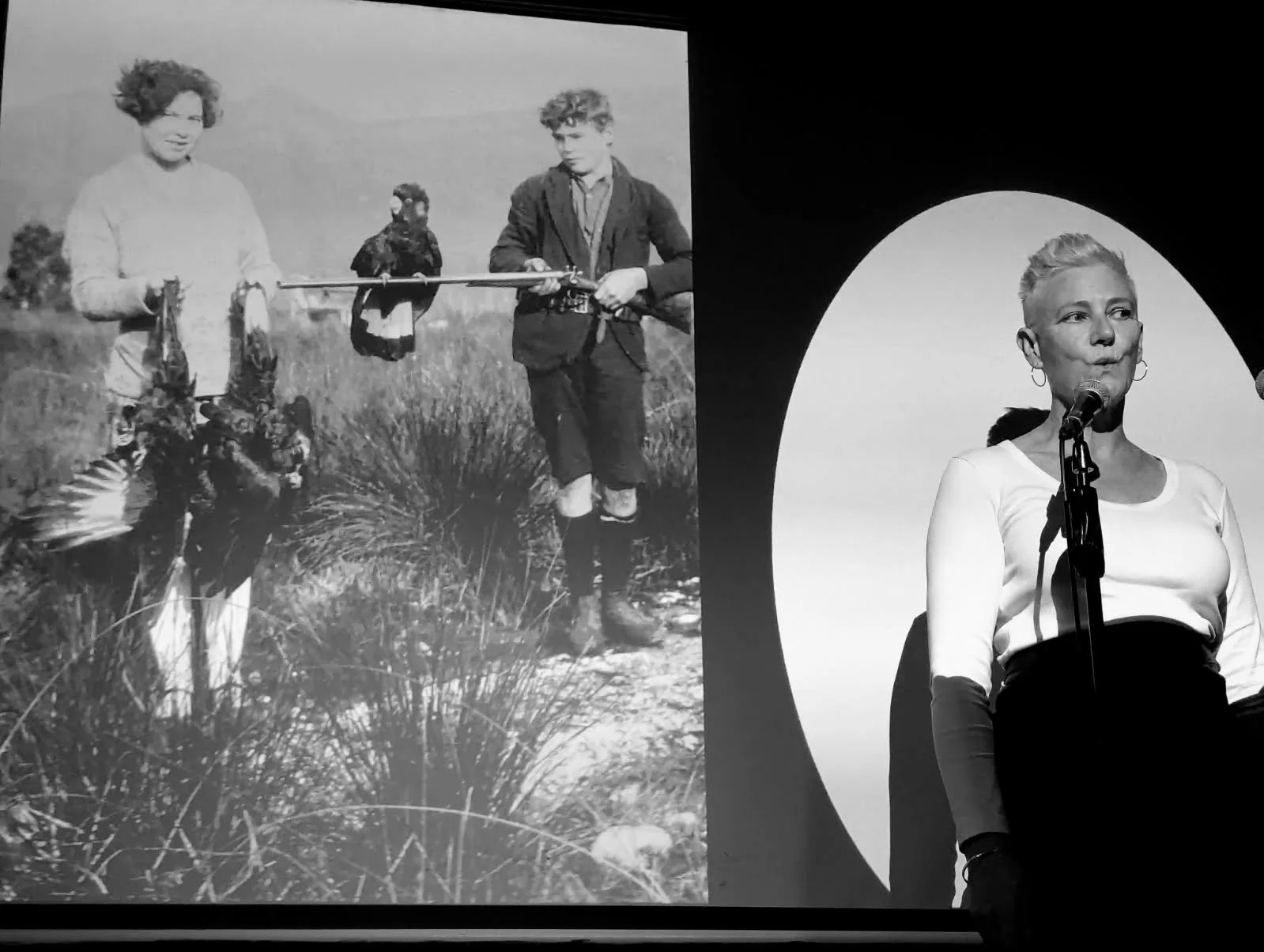It is 1924, near Queenstown on the west coast of Tasmania. A boy holds a double-barrelled gun with a black cockatoo perched, bright-eyed, on the barrel. A young woman with short curly hair stands beside him in the button grass, a dead black cockatoo dangling from each hand.
When artist and poet Jacqui Malins saw this arresting image in a photograph, she was captivated by the woman's face and intrigued by the scene. What is this place? Who is this woman, and what is she doing?
GERT is a non-fiction narrative collection of poetry and images, presented as:
A book of non-fiction poetry and printmaking, published by Recent Work Press in August 2025; and
A dramatic multimedia presentation of spoken word, music and video projection.
It tells two inseparable stories: one of a place, and the other of a woman who lived there.
When I first tried to find out more about Gert, even with her full names from the photo caption, I was struck by her near-complete absence from the public record. This made me more determined to learn and share her story. Through family interviews, archival research, environmental immersion and creative enquiry, I have explored her life and the history of the region.
Gert Bradshaw nee Brown (1906-2001) raised 12 children on a remote property near the mining boom-and-bust town of Queenstown, Tasmania.
In GERT, her story is brought to life through the voice of the Princess River, which traversed their property. The Princess was a tributary of the Queen River, famous for its acidic orange-coloured waters, which flow right through the heart of Queenstown. In GERT, the Princess River observes the landscape and human occupation back into deep time, as well as the daily life of Gert and her family. Alongside my research and writing processes, I created a series of monotype prints made from local botanical specimens and photographs from the family and Museum collections. I also reflect on why I felt drawn to Gert's image and story, and my relationship to her life and circumstances, as a woman born 65 years after her, into a very different world. My own childhood in the mining and industrial environment of Wollongong, and my contemporary environmental and feminist perspectives are among the lenses I contemplate.
With its history of colonisation and settlement, mining and smelting, timber-cutting and hydroelectricity development, and the competing demands for development, environmental protection, restoration and gentrification, Queenstown presents a potent microcosm of challenges facing communities all over Australia and the world.
In this setting, I found in Gert a life both ordinary and astonishing.
Thanks to the ACT Government, who provided some funds to support my development and completion of the mansucript that became GERT.
Images below: Top line - monoprints of botanical specimens and photographs, included in GERT. Bottom line - images of multimedia spoken word performance from the Canberra launch of GERT at Smith’s Alternative on 18 August 2025.










